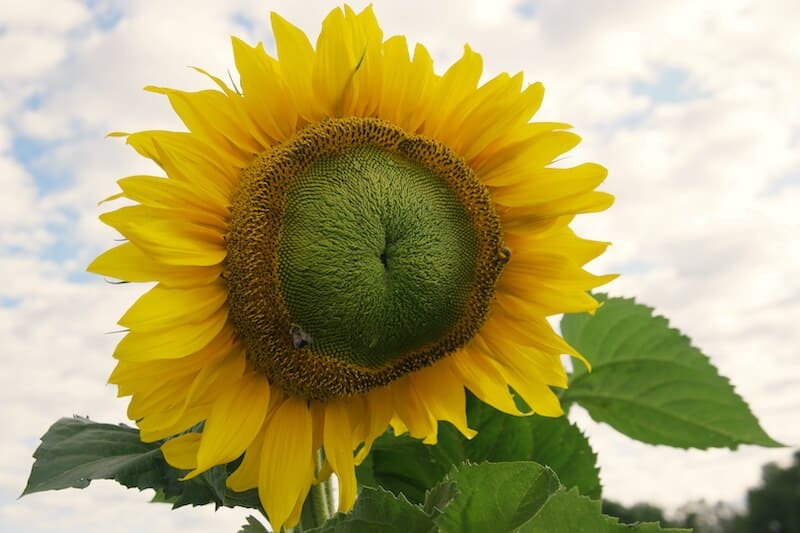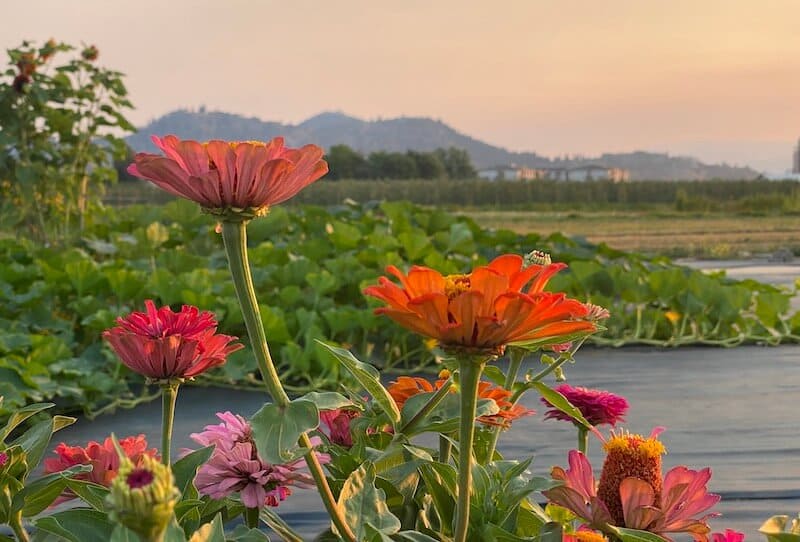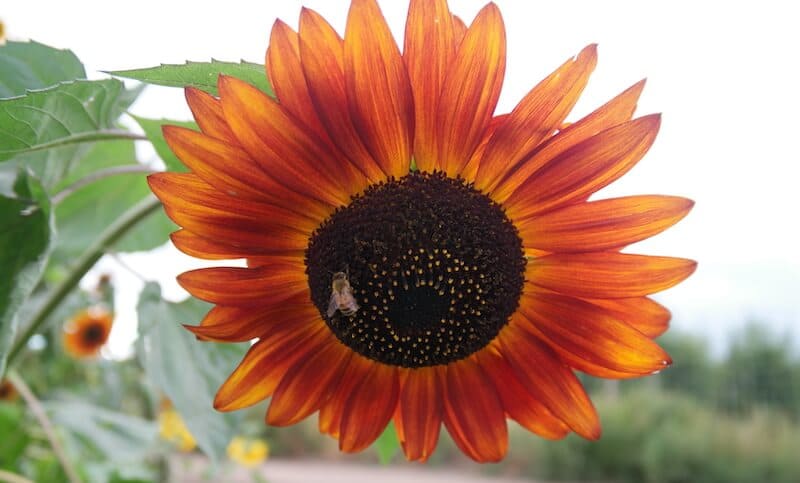
People have a deep fascination with flowers, growing them more than any other type of plant. This obsession, studied by researchers for years, is not only about their visual appeal, but also the way they engage our senses. Flowers stimulate desire, appreciation for beauty and for many, have a calming effect on both mind and body.
The ubiquity of flowers is evident as they can be found growing everywhere— gardens, yards, window boxes, rooftops, rain gutters, parks, empty city lots, repurposed wheelbarrows, cut-in-half oak barrels, and countless types of pots and planters.
Many flowers, like Chamomile, Borage, Chrysanthemums, Hollyhocks, Sunflowers, Lavender, Squash, and Nasturtium, are not just beautiful but are also edible, often served as a vibrant addition to summer salads. They can be easily cultivated on farms, in gardens, or garden containers. Squash blossoms, for instance, can be fried, stuffed with cheese, scattered over pasta, or used as the main ingredient in a squash soup. Chamomile flowers, on the other hand, can be transformed into a calming tea, delicious jelly, or even ice cream.
While many medicinal flowers are edible and used in teas, infusions, cordials, and tinctures, there are also several tropical varieties that are harmful when ingested. Angelica, a member of the parsley family, has been used for millennia to alleviate heartburn, joint pain, and headaches. Before modern pharmaceuticals, Bee Balm served as an antiseptic for treating open wounds on medieval European battlefields. The whole Black-Eyed Susan plant can be transformed into a tincture, stronger than Echinacea, to reduce inflammation and eliminate parasitic worms.
A host of flowers are used in the pharmaceutical industry for their medicinal properties, and these can turn out to be profitable for flower farms. Cultivated pharmaceutical flowers include:
Calendula, Chamomile, Echinacea, Lavender, Passionflower, St. John's Wort, Yarrow, Hawthorn, and Elderberry - all used in various forms to alleviate a multitude of ailments, from skin irritations to anxiety, and from insomnia to immune support.

Flower cultivation also yields multiple environmental advantages, such as providing habitat for pollinators, improving air quality, reducing soil erosion, enhancing biodiversity, beautifying environments, offering protection to understory plants, and acting as carbon sinks.
Growing flowers can have several environmental benefits, and can help promote a healthier, more sustainable, and more beautiful world.

The profitability of flower cultivation is now the new cash crop for farmer. With the potential to earn up to $55,000 per acre, flower farmers are growing cut flowers like Roses, Peonies, Lilies, Sunflowers, and Tulips for profit.
Some of the most profitable flowers to grow for cut flower production include:
Other profitable cut flowers include chrysanthemums, daisies, snapdragons, and gladiolus.
Although a majority of cut flowers in the United States and Canada are imported, more resident farmers are growing flowers. U-Pick flower farms are becoming increasingly popular, which gives consumers a vast variety of choices and guarantees fresher, longer-lasting blooms.
Some of the most popular cut flower varieties are Lilies, Carnations, Delphinium, Gladiolas, Asters, Black Eyed Susan, Cosmos, Daffodil, Dahlia, Peony, Zinnia, Scabiosa, Azaleas, Begonias, Chrysanthemums, Daises, Freesia, Foxglove, Tulips, Gerberas, Lilacs, and Roses.

Flower farms, which focus on commercial flower cultivation, make a substantial contribution to the global economy. They range from small-scale farms catering to local consumers to large-scale farms supplying wholesalers, florists, and retailers. Despite challenges like climate change, pests, diseases, market fluctuations, and shifting consumer preferences, sustainable and innovative farming practices, including those used in Crop Circle Flower Farms, help the industry to continue growing and satisfying the ever-increasing global demand for flowers.
Crop Circle Flower Farms are particularly productive due to the innovative use of geometric patterns, which enhance the health of individual plants. A unique, patented irrigation system delivers precise amounts of nutrients directly to the roots of the plants. Each irrigator allows clusters of flowers to grow, while the spacing between irrigators provides room for flowers to expand their stems and heads.
This unique method of flower propagation encourages plants to grow vertically in large numbers, ready for an efficient and easy harvest. The irrigators are only removed to replenish the nutrients and are then reinstalled. Flowers grown on Crop Circle Farms are robust and vigorous, growing taller and producing large, vibrantly colored heads that command premium prices in the market.
Incorporating a Crop Circle Market Garden is recommended, as this allows for the cultivation of a variety of flowers, catering to both the commercial wholesale market and the general public. A 40-foot Crop Circle Market Garden can produce approximately 6,000 cut flowers.
Ready to transform your land into a high-yield, sustainable farm? Let Crop Circle Farms design and build a custom, low-impact, and water-efficient farm tailored to your needs. Double your income and cut your costs in half! Contact Us
Help us expand our mission to revolutionize agriculture globally. We are seeking partners to implement Crop Circle Farms to feed people in need. Together, we can build scalable food production systems that save water, reduce costs, and feed thousands of people. Contact Growing To Give